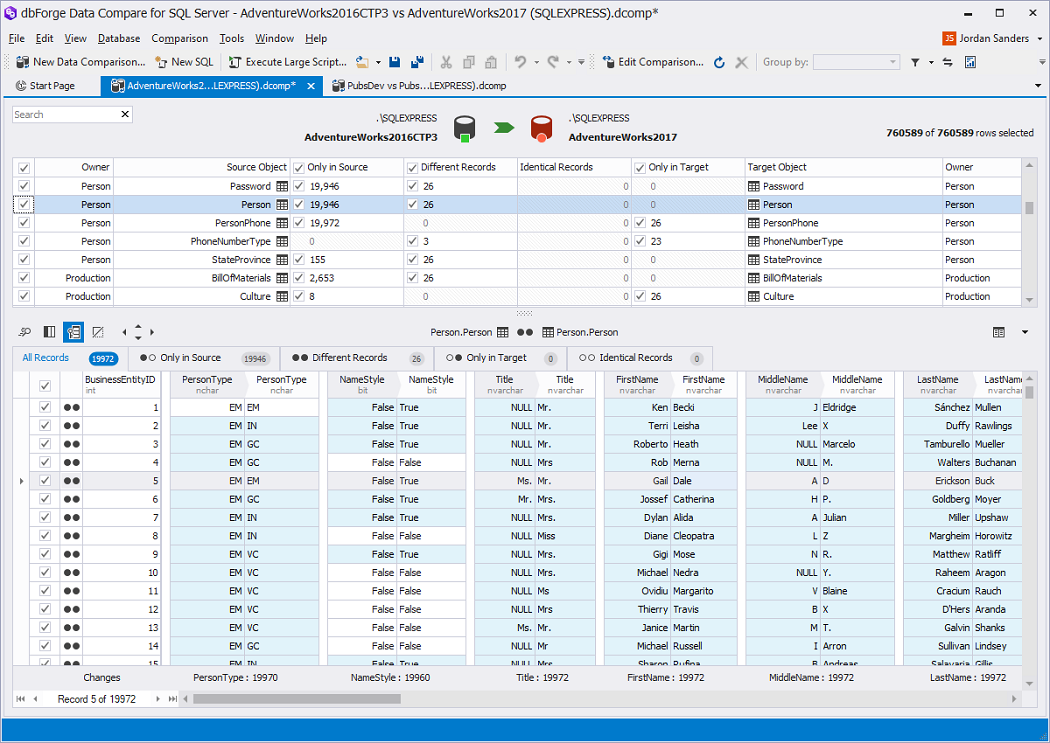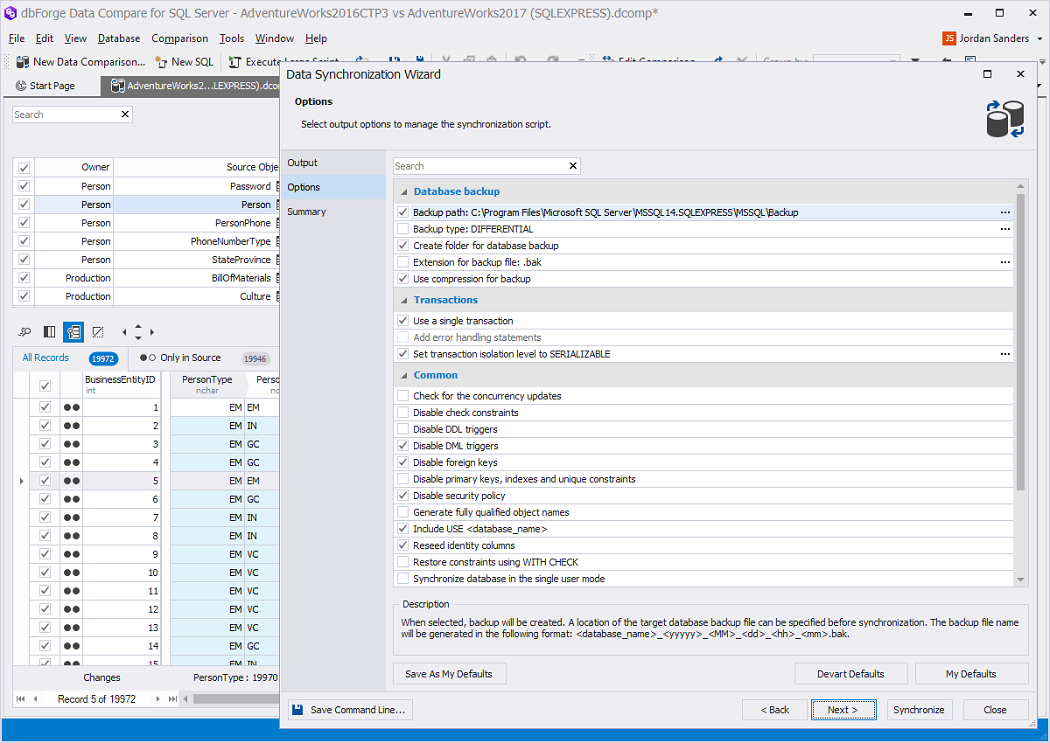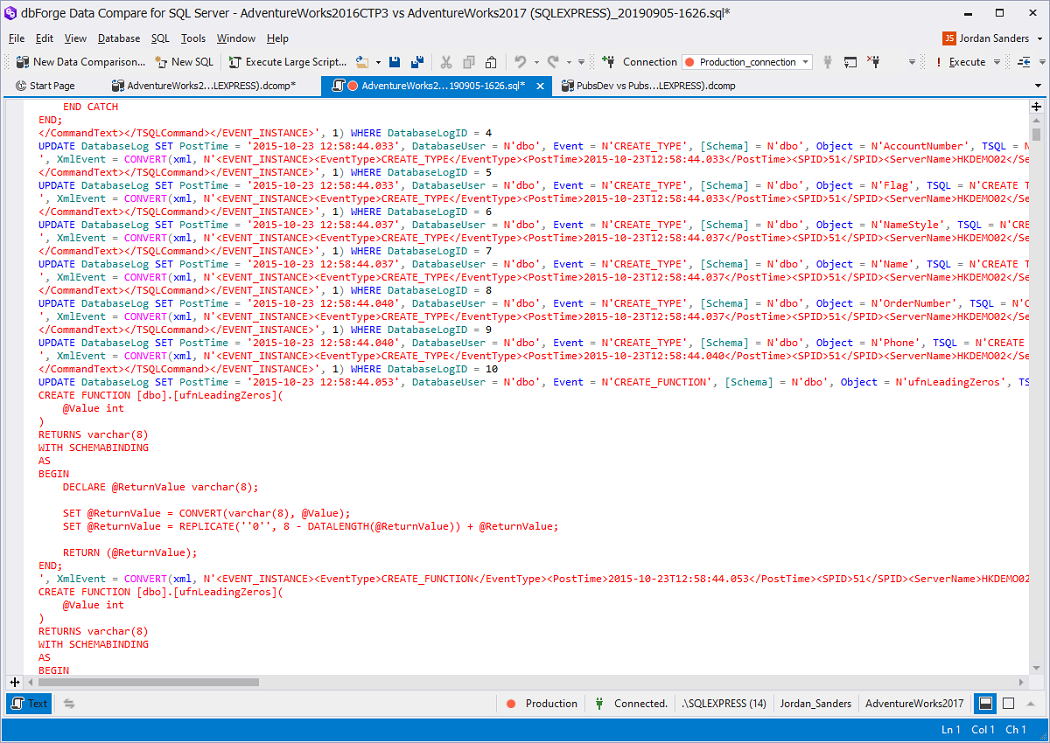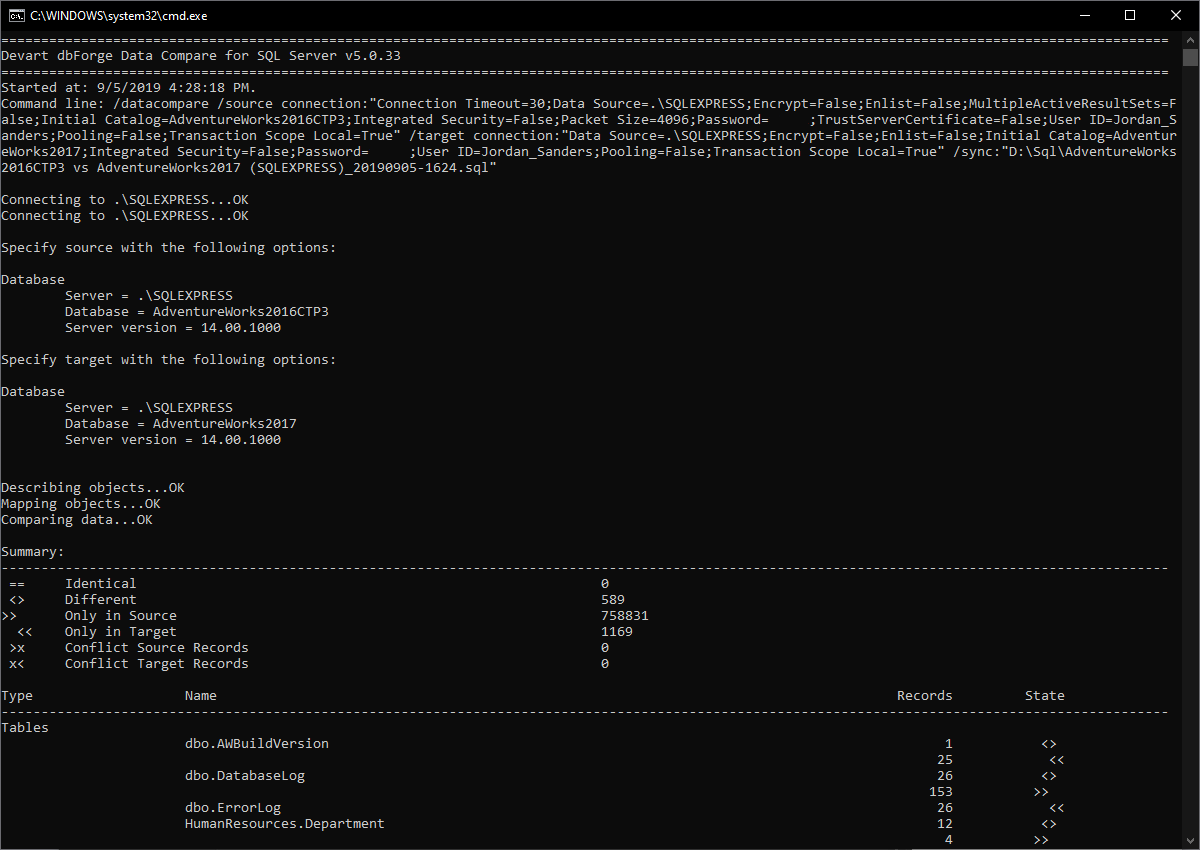How to Synchronize Data in SQL Server Databases
Following the article How to Compare Data in SQL Server Databases, here you will find a detailed description of how dbForge Data Compare for SQL Server further copes with data synchronization of SQL Server databases.
How it works
Synchronization process establishes data consistency between Source and Target databases, during which distinct records from the Source database are automatically transferred to the Target database.
Stages of data synchronization
After you have compared and analyzed the differences between Source and Target databases and selected the tables for synchronization, you can proceed to the synchronization step.1. Click Synchronize on the Comparison toolbar.

2. Data Synchronization Wizard opens suggesting you three options. You can generate a script to synchronize data from Source database to Target database or vice versa. Alternatively, you can save the script to a file and execute it later. The third option is to execute the script directly against the Target database. We recommend you to play on the safe side and select the option Open the synchronization script in the internal editor to be able to see the changes that will be executed against the Target database and make some corrections if required. Click Next.

3. Customize synchronization options according to your preferences and click Next. Also, you can save your custom options for future use by clicking Save As My Defaults.

4. View messages on the Action Plan and Warnings tabs. Pay special attention to warnings, they may affect data in Target database. After that, click Synchronize.

5. In a few seconds, an accurate database synchronization script is displayed in the SQL editor. You can search the script, save it or execute it right away by clicking Execute on the SQL toolbar. Easy as that!

Moreover, the tool has powerful command-line interface support so you can save your time and automate routine synchronization tasks.

Conclusion
dbForge Data Compare for SQL Server makes the whole process of data comparison and synchronization simple and self intuiting. In this article, we have touched upon most salient features of the tool. However, there are many other powerful features that will be useful for database administartors and developers.